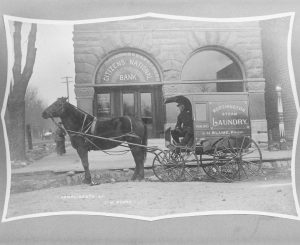The World in a Pot Shard
A Haviland pot shard smaller than a penny.
It’s glaze and thinness stood out on the shoreline of a tiny little lake (Lake Okabena) in the middle of the expansive Great Plains of North America.
The small town hadn’t even been in existence when the Haviland’s started their pottery and porcelain business.
The French Company had to wait until Europeans and Portuguese discovered the “Far East”/China and Japan.
It was Jorge Alvares that first set foot in the land we considered China, his ship moored in the harbor on the Zhujiang River in 1513. Three years later a cousin of Christopher Columbus led a trade mission to Canton. This would have been during the Ming Dynasty.
The Europeans were impressed, they had never seen such quality pottery.
They had nothing like this in the European world. The pottery/porcelain was perfectly bright white, and incredibly thin by European standards.
It was higher quality because of the clay they used and also because of the temperature at which it was fired.
Europeans immediately started to trade in it and also to imitate it. The Dutch were the first to capitalize on the style.
They did not use the precise methods and it was made to look like porcelain, it was called Delft Ware. It wasn’t porcelain, alas it was really a cheap imitation.
The Haviland family had an import and export business in New York and they specialized in British pottery and earthenware.
When they found a piece of French Limoge porcelain in the U.S. they realized their was a larger world and they set off to find its origins.
They founded their own company and became successful importers of French pottery/porcelain.
The Civil War caused dire problems with their business enterprise. At the same time a small town out on the prairies of South Western Minnesota was being founded.
It was a little railroad town that attracted immigrants, farmers and merchants, into the early 1900’s the streets were still dirt and gravel.
In its beginning it was a remote town where news traveled by train, horse & wagon.
The aspiring citizens of this community wanted nothing more than every fledging community wants, more than necessities, they wanted the feeling of affluence and sophistication. Trains brought the outside world to their doorstep.
One of the citizens at that time was a man named George Dayton, he owned farmland and a local bank. (He went on to found Dayton-Hudson Corp which later became Target Stores)
Back to the story!

They wanted the look of sophistication and Haviland pottery would serve that purpose.
The wagons carted this pottery across France to the ships that sailed to New York City.
The newly developed rail system carried it from the eastern seaboard to the midwest and Great Plains. Wagons were used again to ferry it to small towns that lacked rail service.
On the shoreline of this small lake, just two blocks from where the first buildings were erected for commercial enterprise. A shard of porcelain was found.
It is a bit worn from being washed on the shore of this lake for so many years.
It is a relic of France and much more, it serves as testament to our discovery of East Asia.
It is a harbinger of international trade that has found itself onto the prairies of the midwest.
It no longer serves its purpose of high society culinary entertainment.
Yet, It is piece of Haviland Porcelain.
www.billkeitel.com


